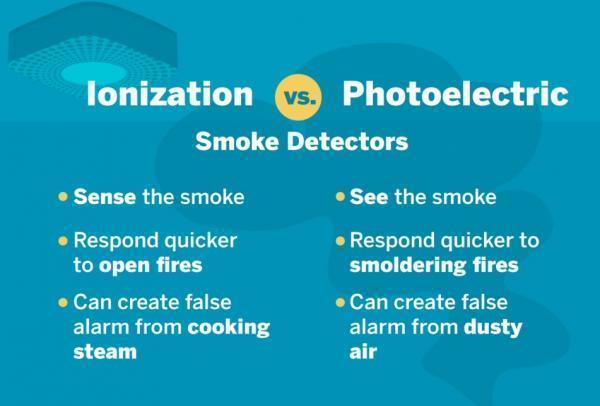Basic Guide to 3 General Smoke Detector Types

A smoke detector (or smoke alarm) is an electronic device for sensing smoke from fire in commercial or residential settings such as townhouse, condominium or houses. When presence of smoke is detected, the smoke detector sends signal via wire or radio signal to main control panel (in commercial building) and generates audible alert itself to warn surrounding occupants of impending danger.
Smoke alarms come in a variety of sizes and shapes but are generally categorized into 3 types: photoelectric, ionization, combination.
Photoelectric/Optical Smoke Detector
A photoelectric smoke detector essentially uses light of infrared, visible or ultraviolet source to detect smoke. When the smoke enters the detector chamber, the light emitted will be obstructed and trigger the alarm signal.
Because of this mechanism, photoelectric/optical smoke detector alarms have faster response time to fire than ionization type smoke alarms.
Ionization Smoke Detector
An ionization smoke detector works by incorporating 2 ionization chambers, with 1 zone accessible to air in the surrounding area, with another enclosed zone not accessible. The radioactive component of the smoke detector then ionizes the molecules in the air which then are able to generate voltage. In other words, it uses electrically charged particles to detect smoke in the area.
These types of detector are cheaper, but are also more prone to false alarm. Also, they have slower response time than their photoelectric counterparts. Some countries also do not allow the use of domestic ionization smoke detector due to reliability.
Combination Smoke Detector
As the name states, this type of smoke detector combines ionization and photoelectric technologies to effectively detect different fire types. As Ionization type reacts better to large fire and photoelectric type reacts better to small fire.

